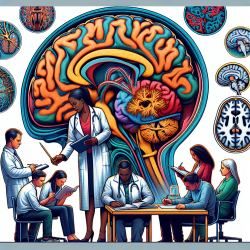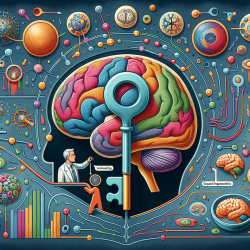Understanding Acute Caudate Nucleus Stroke and Its Clinical Implications
In the realm of neurology, the study of movement disorders such as hemiballismus and chorea presents a complex challenge. These disorders are often associated with lesions in the basal ganglia, particularly the subthalamic nucleus (STN). However, recent research has expanded our understanding of the etiologies behind these disorders, revealing that other brain regions, such as the caudate nucleus, can also be implicated.
Key Findings from Recent Research
The research article titled "Acute Caudate Nucleus Stroke Presenting As Hemiballismus" provides valuable insights into this rare clinical presentation. The study highlights a case where a patient experienced hemiballismus following a stroke in the left caudate nucleus, identified through CT and MRI imaging. This finding challenges the traditional belief that hemiballismus is predominantly linked to lesions in the STN.
In this particular case, a 64-year-old male with a history of stroke presented with right-sided weakness and involuntary movements. Imaging revealed a stroke in the left caudate nucleus, with severe stenosis in the left middle cerebral artery. The patient responded positively to low-dose haloperidol, which significantly improved his symptoms.
Clinical Implications and Recommendations
For practitioners, this case underscores the importance of considering alternative etiologies when diagnosing and treating movement disorders. The following are key takeaways for improving clinical practice:
- Broaden Diagnostic Perspectives: While STN lesions are commonly associated with hemiballismus, practitioners should also consider the possibility of caudate nucleus involvement, particularly in patients with atypical presentations.
- Utilize Advanced Imaging Techniques: CT and MRI are crucial in accurately identifying the location and extent of brain lesions. These imaging modalities can help differentiate between various causes of movement disorders.
- Tailor Treatment Approaches: The positive response to haloperidol in this case suggests that targeted pharmacological interventions can effectively manage symptoms. Practitioners should consider a range of treatment options, including antidopaminergic drugs, benzodiazepines, and anti-epileptics.
Encouraging Further Research
This case study opens the door for further research into the diverse causes of movement disorders. By exploring the roles of different brain regions and vascular supplies, researchers can develop a more comprehensive understanding of these conditions. Future studies could focus on:
- Investigating the prevalence of caudate nucleus involvement in movement disorders.
- Examining the efficacy of various pharmacological treatments in managing hemiballismus and chorea.
- Exploring the genetic and environmental factors that may predispose individuals to these disorders.
Conclusion
The case of acute caudate nucleus stroke presenting as hemiballismus provides valuable insights into the complexity of movement disorders. By broadening diagnostic perspectives and utilizing advanced imaging techniques, practitioners can enhance their ability to accurately diagnose and treat these conditions. Moreover, this case highlights the need for continued research to unravel the intricate mechanisms underlying movement disorders.
To read the original research paper, please follow this link: Acute Caudate Nucleus Stroke Presenting As Hemiballismus.










